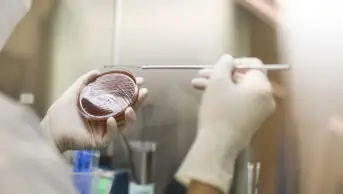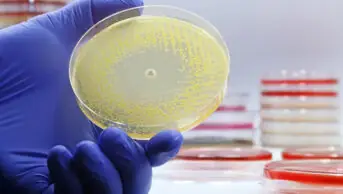
Joel Goodman / LNP / Rex Features
Pharmaceutical companies could be paid a lump sum to reward them for developing successful new antibiotics under proposals designed to ‘de-link’ the profitability of a new drug from its sales volume and make research and development a viable proposition.
The proposals, which aim to make R&D of new antibiotics a more attractive investment for the pharmaceutical industry, are outlined in a report published by the UK’s Independent Review of Antimicrobial Resistance[1]
on 14 May 2015.
The review group, chaired by economist Jim O’Neill, claims its proposals “can radically overhaul the antibiotics pipeline over the next 20 years”. The costs of the interventions, which it estimates to be between US$16bn and US$37bn over a decade, are modelled on producing 15 new antibiotics a decade, of which at least four would be breakthrough products.
Many pharmaceutical companies have moved away from antibiotic development because commercial returns are uncertain. Use of a new antibiotic is discouraged until resistance to existing ones emerges and by the time an antibiotic becomes the standard first line of care it may be close to or beyond the end of its patent life, meaning that the pharmaceutical company may struggle to recoup its development costs.
The review group proposes a system under which a global organisation, a group such as G20 for example, has the authority and resources to commit lump-sum payments to successful drug developers. These payments would be set against agreed criteria and would ‘de-link’ the profitability of a drug from the volume of its sales. This would support conservation goals by eliminating the commercial imperative for a drug company to sell new antibiotics in large quantities – a key contributor to the spread of resistance.
The review came up with two potential models. The most radical “would be for a designated global body, with a broad base of buy-in from nation states, to establish a mechanism to purchase the global sales rights to new antibiotics, and to subsequently manage their supply internationally”.
The alternative is a hybrid of this model and the existing price-by-volume approach in which the global body would give a smaller set payment to companies who come up with new antibiotics, based on their value to health, and the company would still be able to sell their drugs for profit.
The report also proposes that a global antimicrobial resistance Innovation Fund of around US$2bn over five years is set up for blue-sky research into drugs and diagnostics, through universities and small biotech companies. This fund, previously alluded to by O’Neill and revealed by
The
Pharmaceutical Journal in March 2015, would come from a variety of contributors, including governments and existing research funders, but also the industry itself. “Big pharma should have a role in paying for this innovation fund: it needs to look beyond short-term assessments of profit and loss, and act with ‘enlightened self-interest’ in tackling AMR, recognising that it has a long term commercial imperative to having effective antibiotics, as well as a moral one,” the report says.
Finally, the report notes that antibiotic development needs to be supported by improved research efficiency and making global regulatory systems easier to negotiate wherever possible without compromising patients’ safety.
Pharmaceutical companies already working in antibiotic development have welcomed the proposals.
Patrick Vallance, GlaxoSmithKline’s president of pharmaceuticals R&D, said that as one of the few companies still conducting antibiotic research, “we are very encouraged by the ideas it sets out to modernise the economic model to encourage investment in research and ensure reasonable returns for successful innovation while discouraging unnecessary use of new antibiotics.”
Severin Schwan, chief executive officer of Roche, which is focusing its research on multi-drug resistant strains, said: “The solution requires collaboration and action from pharmaceutical and biotech companies, academia, governments and public health organisations. Roche is committed to …being a part of this solution.”
However, some companies which had withdrawn from antibiotics R&D say they have no plans to return to the field, because it would not fit with their strategy. A spokesman for Pfizer, which pioneered the mass production of penicillin during the Second World War, but pulled out of antibiotics R&D in 2011, said: “Pfizer’s R&D focus in infectious diseases has shifted from treatment to prevention.”
The Association of the British Pharmaceutical Industry (ABPI) welcomed the report’s focus on de-risking R&D and de-linking rewards for innovators, but also raised concerns.
Mark Lloyd Davies, chair of the ABPI antibiotic network, said: “There are also issues to resolve about how the global reimbursement fund will work — who will pay for it? How will new antibiotics be judged to be of sufficient value to access the fund?”
References
[1] The Review on Antimicrobial Resistance. Securing new drugs for future generations: The pipeline of antibiotics. May 2015.


